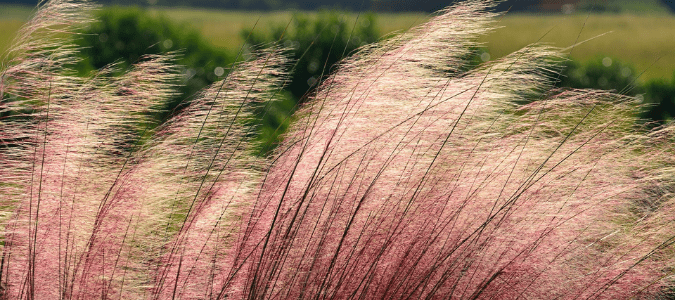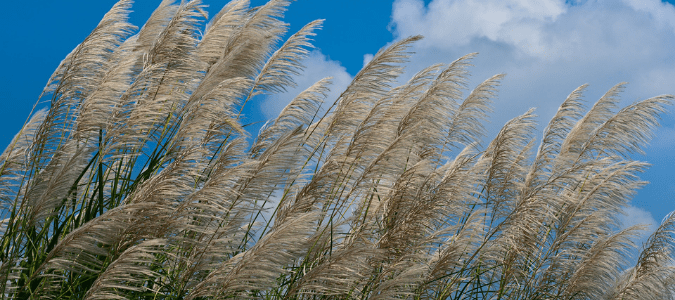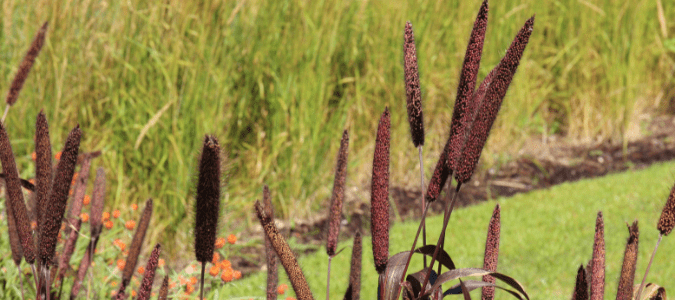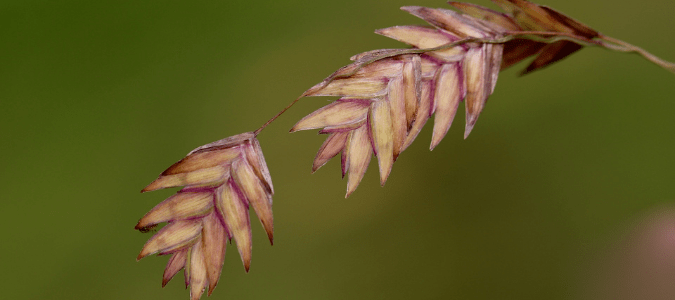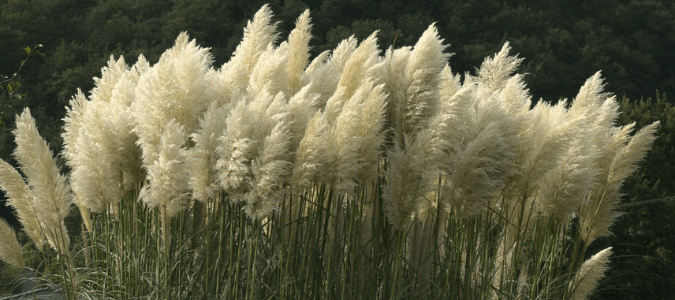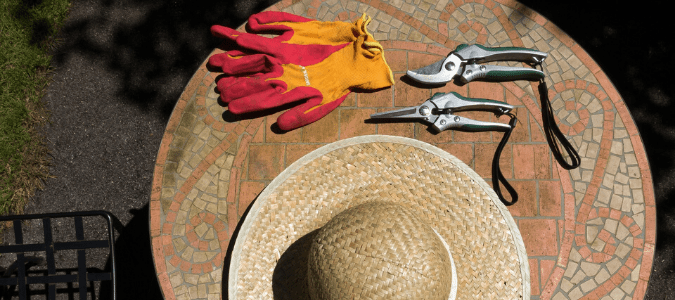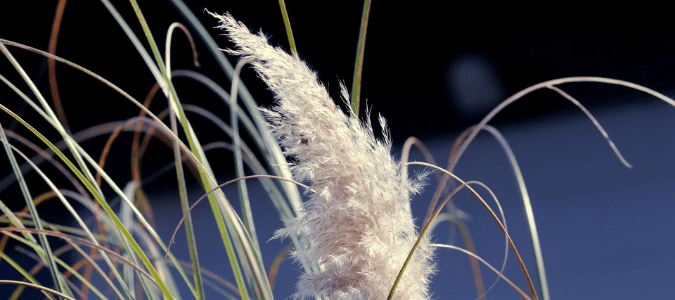Temperatures are inching up, and spring is on the way. That is the time when homeowners’ minds turn to freshening up their landscaping. Maybe you’re considering new plants or shrubs to make your yard look like new. In years past, creating the perfect landscape meant crafting a carefully manicured lawn with trimmed and shaped shrubs and blankets of flowers in neat sections. All this took a lot of time and water to maintain. But there is a new way of landscaping these days.
Before you go out and buy a lot of things that might work in our climate, you could think about the trend of using native plants. Instead of fighting the Texas climate, homeowners are planting things like ornamental grasses. These grasses are suitable for the soil and temperatures here and don’t require an excessive amount of watering. As a bonus, these grasses add a natural beauty to your yard! Talk to a landscaping professional about what types of ornamental grasses suit your tastes and lifestyle. There are many types, from grasses that grow in a bunch to varieties that spread out, and in varying heights as well. Do your research and plan your design before you shop.
Here are some of the most popular options for Texas homeowners.
Muhly Grass (Muhlenbergia)
Pictured above, these native grasses are very hardy and drought-tolerant so they are excellent landscaping plants for Texas homeowners. The Gulf Muhly grows low with a fine texture. It produces beautiful flowers that morph into a gorgeous rose-purple in the fall. You might also consider Lindheimer’s Muhly (M. lindheimeri), with its bluish-green mounds of foliage that can get up to 5 feet tall. This variety is native to Texas.
Miscanthus
There are about 20 different species of this grass. The name comes from the Greek word for stalk (mischos) and for flowers (anthos). This ornamental grass is often called maiden grass or Japanese silver grass. The “anthos” part of the name comes from the flowers that bloom above the foliage in the fall.
Two varieties of miscanthus that grow quite tall—6 feet tall to be exact—are the zebra grasses Zebrinus and Strictus. These are called zebra grasses due to the horizontal bands of yellow across their leaves. A similar but more compact version of this striped beauty is called Gold Bar, which you can find in the Tyler Rose Garden. Several other varieties of miscanthus are variegated as well.
After the flowers fade from the miscanthus grasses, just before winter, it is best to cut the stems down to the ground. This prepares the grass to renew itself the following spring. A professional is familiar with the best care practices for all ornamental grass. They can suggest the best varieties for your yard and can also do the seasonal maintenance as well.
Purple Millet
This tender perennial can easily be started from seed and tolerates heat and low levels of moisture. Birds love to dine on its seeds! Purple millet grows 4 to 6 feet tall and has flowers that can be 8 to 12 inches, from gold to purple in color. They grow well in pots, and its stems can be used in dried flower arrangements.
Northern Sea Oats
This native grass is best planted in groups. It grows well in sun or woodland shade, and its flower spikelets turn from green in the summer to light pink and copper in the fall. Be sure to cut off the seed heads before they shatter when they turn brown, or you will have this grass popping up everywhere! This ornamental grass looks good in a garden and grows about 2 to 2.5 feet tall.
Pampas Grass
This common grass can grow to be 8 feet tall and is a very familiar plant to most people in Texas. But that doesn’t make it any less beautiful in a home landscape! This grass is dioecious, meaning the female and male flowers grow on separate plants, with the female flower being the longest and largest. This grass has varieties that offer several different colored flowers.
While all of these grasses are beautiful, some may work better in your yard than others. If you’re unsure of which would work best for you, a landscape professional can create a landscape plan that will best fit your needs and style.
Ornamental Grass Care
One of the great things about ornamental grasses is their relatively low need for attention. The varieties are great for filling in any bare areas of your landscaping or for serving as a background or accent for your other plants.
Most varieties of ornamental grass are perennial, meaning they come back season after season. A few are annuals, meaning they die off in the winter and you would have to replant them the following year. However, these annuals usually are grown in northern climates.
Soil Requirements
Ornamental grasses will grow in just about any type of soil, though like most plants, they like to have good drainage. Lack of rain isn’t a problem for them, as they are drought-tolerant plants. That makes the grasses a great fit for the area! As a bonus, pests also aren’t really a problem with these varieties, even if your pests are of the deer variety. They tend to steer clear.
Sun Requirements
A lot of these grasses need at least six hours of sunlight each day, so choose a spot with decent drainage in the soil and the appropriate exposure to light. You can leave the grasses alone in the winter, but it’s best to cut them back to the ground in spring, before the new growth starts. If you leave the seed heads on the ground when you do the trimming, you might find birds gathering for some snacks!
Trimming Requirements
To cut back the grass, you can probably use regular shears if the grouping isn’t too dense. If the grass has grown in clumps or is tall, you would have more luck using hedge trimmers, which also give you a neater look. Make the cut about 3 to 4 inches above ground. A professional can easily take care of this task. They can also help maintain your lawn.
Eventually, your perennial grasses will crowd out of their intended space and you should divide them and plant some elsewhere. After you have cut back that year’s growth, as we talked about above, move the dirt away from the roots of the grass club about an inch down. Lift out that clump, roots attached, and replant in its new home as soon as possible. Make sure to use a soil and compost mix to help the divided grass thrive.
When to Plant Ornamental Grasses
The kind of grass you choose will help determine the best time for planting. For perennial varieties, you can plant in spring or fall, when temperatures are relatively mild. If you happen to pick an annual grass that will last one growing season, stick with spring for planting so the roots will take hold at the right time.
Grasses known as “cool season grasses,” such as fescues and Tufted Hair Grasses (Deschampsia), like the fall and spring in our area. But, if they aren’t watered during low-water months in winter, they will go dormant. The “warm season grasses” such as Northern Sea Oats, Japanese Silver Grass and Pampas Grass do very well in the scorching hot blaze of summer. Their vibrant colors and textures thrive in our environment.
Before you plant your grasses, be sure to till the soil well to prepare it properly. Ornamental grasses don’t need a lot of fertilizer. You should plan to add about a pound of all-purpose fertilizer for each 100 square feet of garden or planting space. Water the plants well after you get them in the ground.
Fall planting can be a little tricky especially if winter comes early or is severe. If you do decide to plant in the fall, finish the job in September. Then, add a light layer of hay or straw over the plantings to protect them that first winter in the ground.
If you have questions about which variety would not only work well in our local climate but also with your soil and the composition of your space, it may be worth hiring a landscape designer. They can also refer you to a company that provides lawn service, so your beautifully landscaped yard can stay healthy.
ABC Can Help You Pick the Best Ornamental Grass for Your Landscape
There are so many beautiful options for ornamental grasses that grow well in Texas. ABC Home & Commercial Services can help you decide which will look best based on your style and landscape. Additionally, our landscape professionals can plant the ornamental grass for you, so you don’t have to do any of the hard work. We can also maintain your yard, so it stays looking its best.
